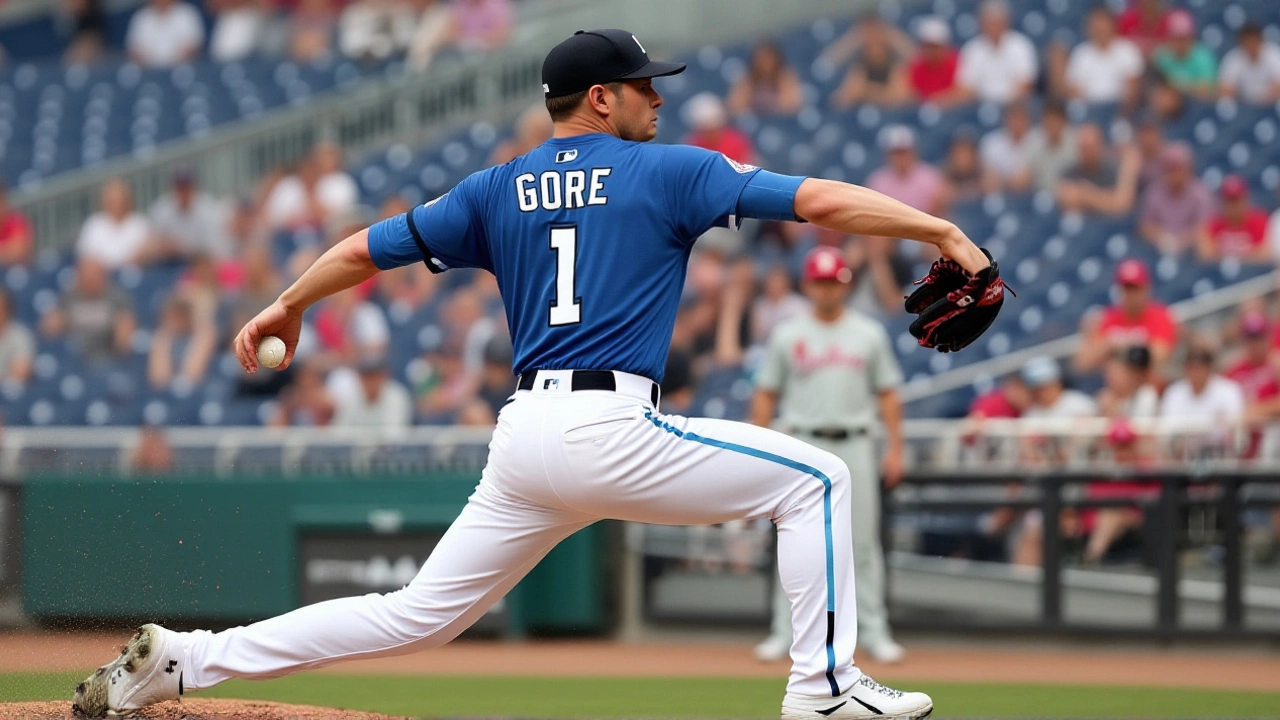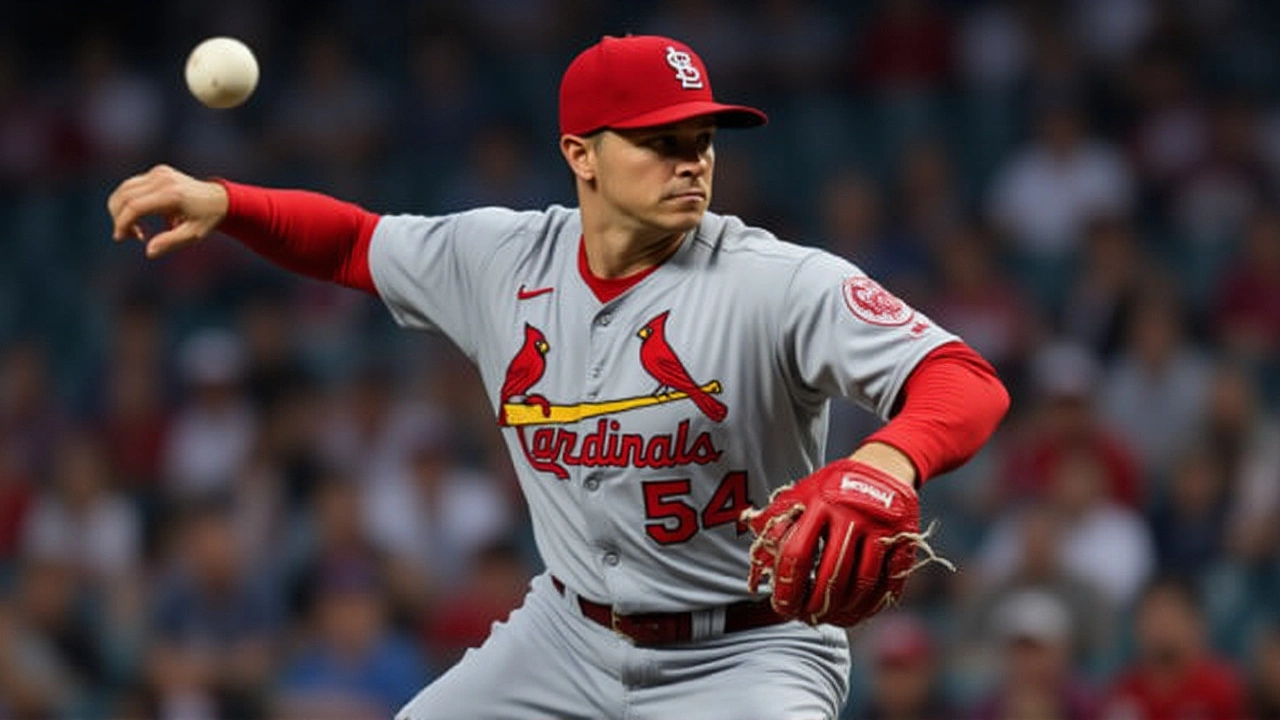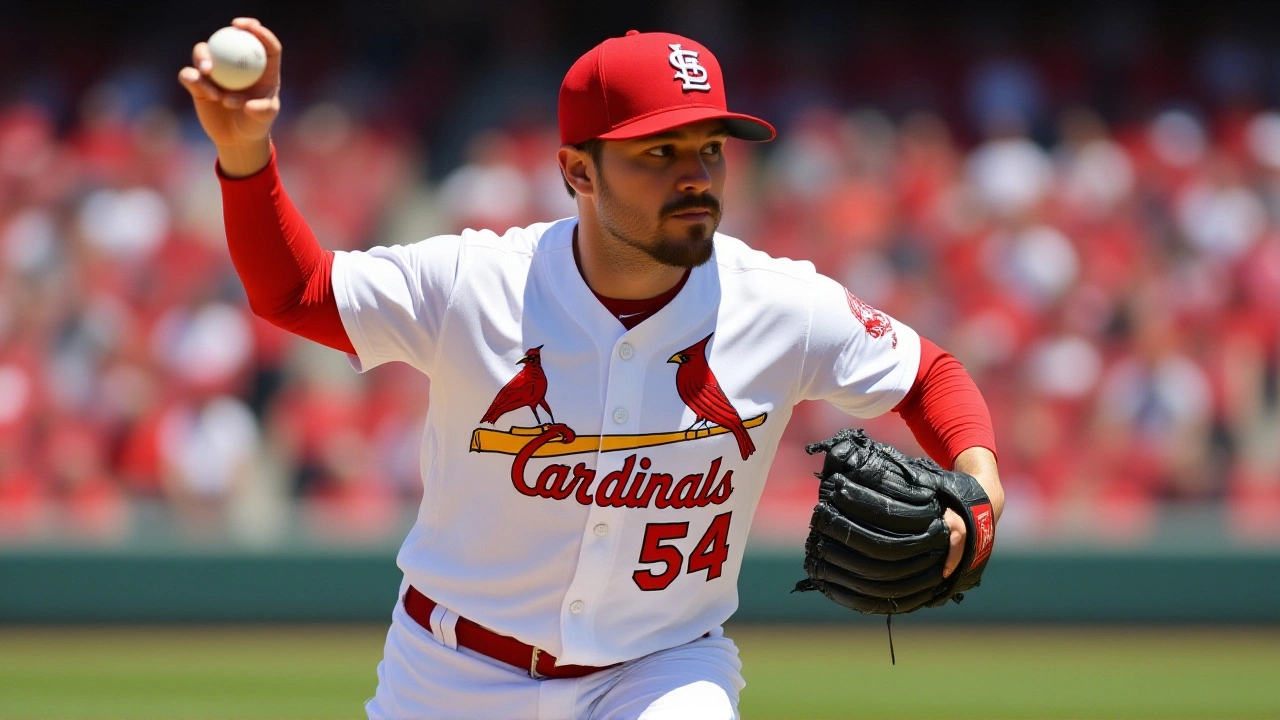
When the Boston Red Sox acquired 36-year-old right-handed pitcher Sonny Gray from the St. Louis Cardinals on November 25, 2025, they didn’t just add a veteran arm—they handed the Washington Nationals a price tag they can’t ignore. In exchange for Gray, St. Louis received left-hander Brandon Clarke, right-hander Richard Fitts, and $20 million in cash. But here’s the twist: Gray’s $35 million 2026 salary was renegotiated down to $31 million, with his 2027 club option buyout bumped from $5 million to $10 million. That’s a steep price for one year of control over a 36-year-old starter. And yet, it’s now the clearest yardstick the Nationals have ever had for evaluating their own 26-year-old left-hander, MacKenzie Gore.
Why Gray’s Deal Changes Everything for Gore
Gray’s 2025 season looked familiar to Gore’s: a 4.19 ERA, 185 strikeouts, and a stretch of brutal luck that dragged down his numbers. But Gore is a decade younger, under team control for two more years, and projected to make just $4.7 million in 2026. That’s not a typo. For less than 15% of Gray’s salary, the Nationals have a pitcher with similar underlying metrics—better command, higher strikeout potential, and a ceiling that still hasn’t been reached.
As Paul Cubbage noted on Twitter on November 25, 2025, the Cardinals got a 50 Future Value prospect and a 25-year-old former 50 FV starter for Gray. "Gore had a similar 2025 to Gray (mid results but strong underlying numbers) and is younger and much, much cheaper," Cubbage wrote. That line has echoed through front offices from D.C. to L.A. It’s not hyperbole—it’s arithmetic.
The Angels, Cubs, and Mets Are Circling
The Boston Red Sox, now armed with Gray to pair with ace Garrett Crochet, have publicly stepped away from pursuing Gore. But that doesn’t mean the market cooled—it exploded. With Gray off the board, teams that were waiting on the sidelines now have a reference point. The Los Angeles Angels, who missed out on Gray after acquiring Grayson Rodriguez, are reportedly shifting focus to Gore as their new frontline target. The Chicago Cubs, rebuilding with a young core and deep farm system, are also in the mix. And the New York Mets, always aggressive in the pitching market, haven’t ruled out a late push.
According to Halo Hangout’s November 26 analysis, the package needed to land Gore would be "huge"—but still "substantially less" than what’s required for Tarik Skubal, the Tigers’ ace and the undisputed top trade target. That’s the key: Gore isn’t Skubal. But he’s not Gray, either. He’s the sweet spot: elite upside, low cost, and two years of control. That’s rare.

Washington’s Strategic Crossroads
The Washington Nationals, headquartered at Nationals Park in Washington, D.C., are at a defining moment. General Manager Mike Rizzo faces a choice: keep Gore as the cornerstone of a rebuild, or cash in while his value is at its peak. Gore’s 2025 season was a rollercoaster—he was a Cy Young frontrunner in May, made his first All-Star team, and finished with career highs in strikeouts. But a four-game meltdown (23 runs in 18 innings) buried his ERA and cooled his trade buzz.
That’s the risk. But here’s the reality: teams don’t trade for perfect seasons. They trade for potential. And Gore’s potential is clearer than ever. Baseball Prospectus ranked Gray 11th in starting pitcher value for 2025, behind only Crochet, Skubal, Paul Skenes, and Jacob deGrom. Gore didn’t crack the top 20—but he’s two years younger, cheaper, and has a higher floor. That’s not a flaw. That’s an opportunity.

The Ripple Effect: A New Era of Pitching Trades
The Gray deal didn’t just set a price for Gore—it broke the dam. After a quiet offseason, the market for elite starters suddenly roared to life. Teams that were hesitant to spend now have a benchmark. The Minnesota Twins are fielding offers for Joe Ryan. The Miami Marlins are listening on Sandy Alcantara. The Milwaukee Brewers are weighing offers for Freddy Peralta. All of them now have a new reference point: a 36-year-old pitcher with one year left got two prospects and $20 million. What does a 26-year-old with two years left and elite upside deserve?
One thing’s certain: the Nationals aren’t rushing. They’ve seen this movie before. They traded Max Scherzer and Trea Turner for prospects, and it’s taken years to rebuild. But this time, they’re not starting from zero. They have a player who can deliver immediate value—and a market that’s finally willing to pay for it.
Frequently Asked Questions
How does the Sonny Gray trade impact MacKenzie Gore’s trade value?
The Gray deal established a concrete financial and prospect-based benchmark: a 36-year-old pitcher with one year of control fetched two prospects and $20 million, despite a $31 million salary. Gore, at 26 with two years of control and a $4.7 million salary, represents far greater long-term value. Teams now know what a veteran starter costs—making Gore’s youth, affordability, and upside even more attractive as a trade asset.
Why are the Los Angeles Angels interested in MacKenzie Gore?
After missing out on Sonny Gray and acquiring Grayson Rodriguez, the Angels are seeking a true frontline starter to anchor their rotation. Gore’s 2025 performance—185 strikeouts, All-Star selection, and elite underlying stats—combined with his age and affordability, makes him a perfect fit. With a young core and financial flexibility, Los Angeles is positioned to offer a high-ceiling prospect package that rivals what the Red Sox gave for Gray.
What’s the likelihood the Washington Nationals keep MacKenzie Gore?
It’s unlikely. With a rebuilding timeline and no clear path to contention before 2028, the Nationals’ front office, led by Mike Rizzo, is focused on acquiring young talent. Gore’s value has never been higher, and the market is now active. Holding onto him for another two years risks diminishing his trade return if he regresses. Trading him now maximizes return and accelerates the rebuild.
How does MacKenzie Gore compare to Sonny Gray in 2025?
Their 2025 stats are eerily similar: Gore posted a 4.19 ERA and 185 strikeouts over 185 innings; Gray had a 4.02 ERA and 179 strikeouts over 178 innings. But Gore’s K/BB ratio was superior, and his fastball velocity and spin rates suggest more room for growth. At 26, Gore has a decade of prime left. Gray, at 36, is in his final years. The comparison isn’t about current output—it’s about future value.
Who else is in the pitching trade market after Gray’s deal?
With Gray off the market, attention has shifted to Joe Ryan (Twins), Sandy Alcantara (Marlins), Freddy Peralta (Brewers), and Tarik Skubal (Tigers). Skubal remains the top target, but Gore is now the most appealing alternative for teams seeking balance between cost, control, and upside. The Gray trade unlocked a wave of activity, and more deals are expected before the end of December.
What kind of return should the Nationals expect for MacKenzie Gore?
Based on the Gray deal, the Nationals could realistically target two high-upside prospects—one ranked in the 50-60 FV range and another in the 40-45 range—along with a solid MLB-ready arm. The Red Sox gave up Clarke (a 50 FV prospect) and Fitts (a 25-year-old former 50 FV starter). Gore’s younger age and longer control window should command a slightly higher package, possibly including a top-100 prospect with All-Star potential.